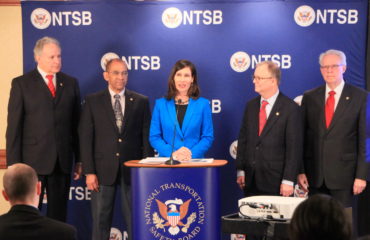
Martin Luther King, Jr. National Memorial
In the United States, the third Monday in January is a day for reflection and service, a day for speaking up for justice and equality. Dr. Martin Luther King, Jr. spoke eloquently about his dream of a “vibrant multiracial nation united in justice, peace and reconciliation[1]” and today we recognize his leadership and inspiration.
Safe Roads for All
I am not Dr. King, but I have my own dream. It may not be as grand as Dr. King’s, but still one that can enrich every society on this planet. I dream of a day when our roads and highways are safe for all; drivers, passengers, cyclists, and pedestrians. Granted, the problem has been around for centuries, so I know it will not happen soon; probably not even in my lifetime. But that doesn’t mean I won’t continue working for that day.
Change is Coming

It started in the day of the horse drawn carriage and continued with the motorized carriage
It started in the day of the horse drawn carriage and continued with the motorized carriage and now the automobile. People were injured and killed on our roads even when it was just the horse and carriage. But it is significantly worse today. 1.24 million people are killed and 50 million seriously injured every year. Unlike 200 years ago when the the wagon got lose and ran over a pedestrian every once in a while, today, 3,000 people are killed daily. Sadly, over 80% of crashes are caused by human error. Impaired driving, distracted driving, not wearing a seat belt, and speeding are just some of the causes of all of these fatalities and injuries.
Yet there is good news. Cars are safer than they were 50 years ago with better designs and new technological features such as automatic braking. Roads are devised safer with guardrails when needed and speed bumps where appropriate. Intersections and roundabouts are taking into account traffic patterns and human error. We are improving on many of the non-human factors and that has made a difference.

We have to do better and stop taking driving for granted
Addressing Human Error
We have been addressing the low hanging fruit, which will make a difference. However, it is now time to concentrate on the big challenge: human error. What does that mean? It means each and everyone one of us has to do better and not take driving for granted.
Automobiles, motorcycles, trucks have all made a difference in our society. They have allowed us to travel great distances in a short time when compared to how it was 200 years ago. Every day we get up and drive to work, go visit with friends, or travel to new places and see new sights. Driving is an activity that we regularly do. But doing something regularly does not mean it is safer. Granted, new drivers have a number of concerns and lack the important abilities we develop over time. However, there are still drivers on the road who are learning how to drive, and many people are taking significant risks.
9 Tips to Be A Safer Driver

9 Tips for Road Safety
What risks, you ask? Not putting a seat belt on when in the car or truck, or not wearing a helmet while on a motorcycle is a major risk. Talking on the phone (hands free or not) or worse yet, texting, increases the odds of being in a crash. Speeding down the highway and going too fast for conditions or passing in dangerous situations put you and others in jeopardy. There are other risks as well, but all of these actions are things that we can stop doing and thus reduce our risk of being in a crash. Below are 9 tips to be a safer driver.
- Put the phone down and drive. It’s time to focus on what’s important, your driving.
- Slow it down. Speed kills. A 5% reduction in the average speed would reduce fatal crashes by 30%
- Wear Your Safety Belt. Airbags are not enough as they work in combination with seat belts.
- Wear a good-quality helmet. Wearing a helmet can reduce your risk of death by 40%
- Don’t drive impaired. It’s not worth it – get a designated driver or stay where you are. Don’t drink and drive.
- Share the Road. There are others using the road, bicyclists, pedestrians, commercial vehicles and we all have to get along to get to our locations.
- Keep your cool while driving. Aggressive driving creates huge risks and responding to someone is fraught with peril.
- Get your rest before driving. Drowsy driving is a problem, and sleep is the only solution.
- Stop on Red. Intersection crashes are some of the most deadly. When the light is red – Stop.
Road safety is a concern for everyone. Remember that your actions impact yourself and others. What could be more important when driving than getting to your location safe and sound? Stay focused and drive.
What do you think?
[1] The Meaning of the King Holiday, The King Center.





